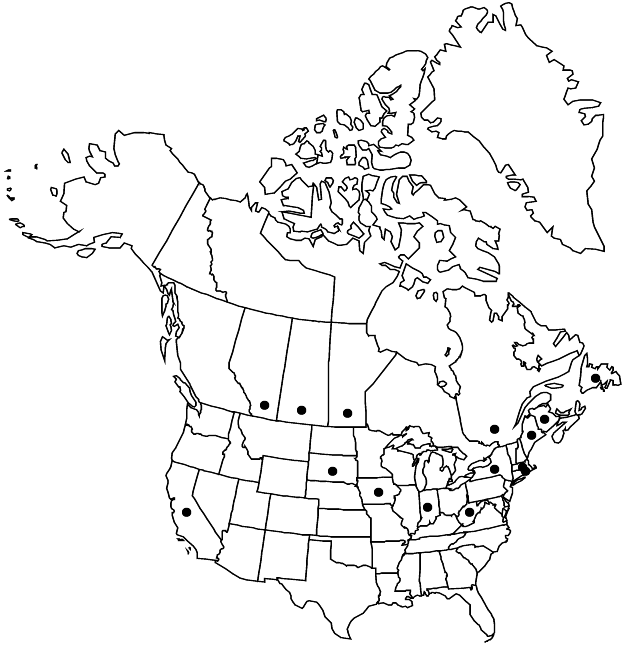Polygonum aviculare subsp. rurivagum
Fl. Vosges, 195. 1887.
Plants green, homophyllous to heterophyllous. Stems 1–10, procumbent to ascending, branched at most nodes, proximal branches divaricate, not wiry, 10–40 cm. Leaves: ocrea (6–)8–12 mm, proximal part cylindric, distal part with veins conspicuous, soon disintegrating into persistent fibers; petiole 0.3–2 mm; blade green, lateral veins strongly raised adaxially, narrowly elliptic to linear-lanceolate, (10–)15–27(–30) × 0.5–4.8(–8) mm, (4.5–)5–15(–19) times as long as wide, apex acute; stem leaves 1.2–2.4 times as long as branch leaves. Cymes uniformly distributed along stems and branches, 1–3-flowered. Pedicels enclosed in or exserted from ocreae, 1.5–3 mm. Flowers: perianth 2.2–3.1 mm, 1.6–2.6 times as long as wide; tube 26–40(–42)% of perianth length; tepals often not overlapping, green with pink or red margins, oblong, ± cucullate, outer tepals not pouched at base; veins branched, moderately to strongly thickened; stamens 7–8. Achenes usually exserted from perianth, blackish brown, ovate, 3-gonous, 2.1–2.6(–3) mm, faces subequal or unequal, flat to concave, apex straight, coarsely striate-tubercled; late-season achenes uncommon, 2.5–4 mm. 2n = 60.
Phenology: Flowering Jul–Oct.
Habitat: Disturbed places
Elevation: 0-1000
Distribution

Introduced; Alta., Man., N.B., Nfld. and Labr. (Nfld.), Que., Sask., Calif., Ind., Iowa, Maine, Mass., N.Y., R.I., S.Dak., W.Va., Europe.
Discussion
Selected References
None.